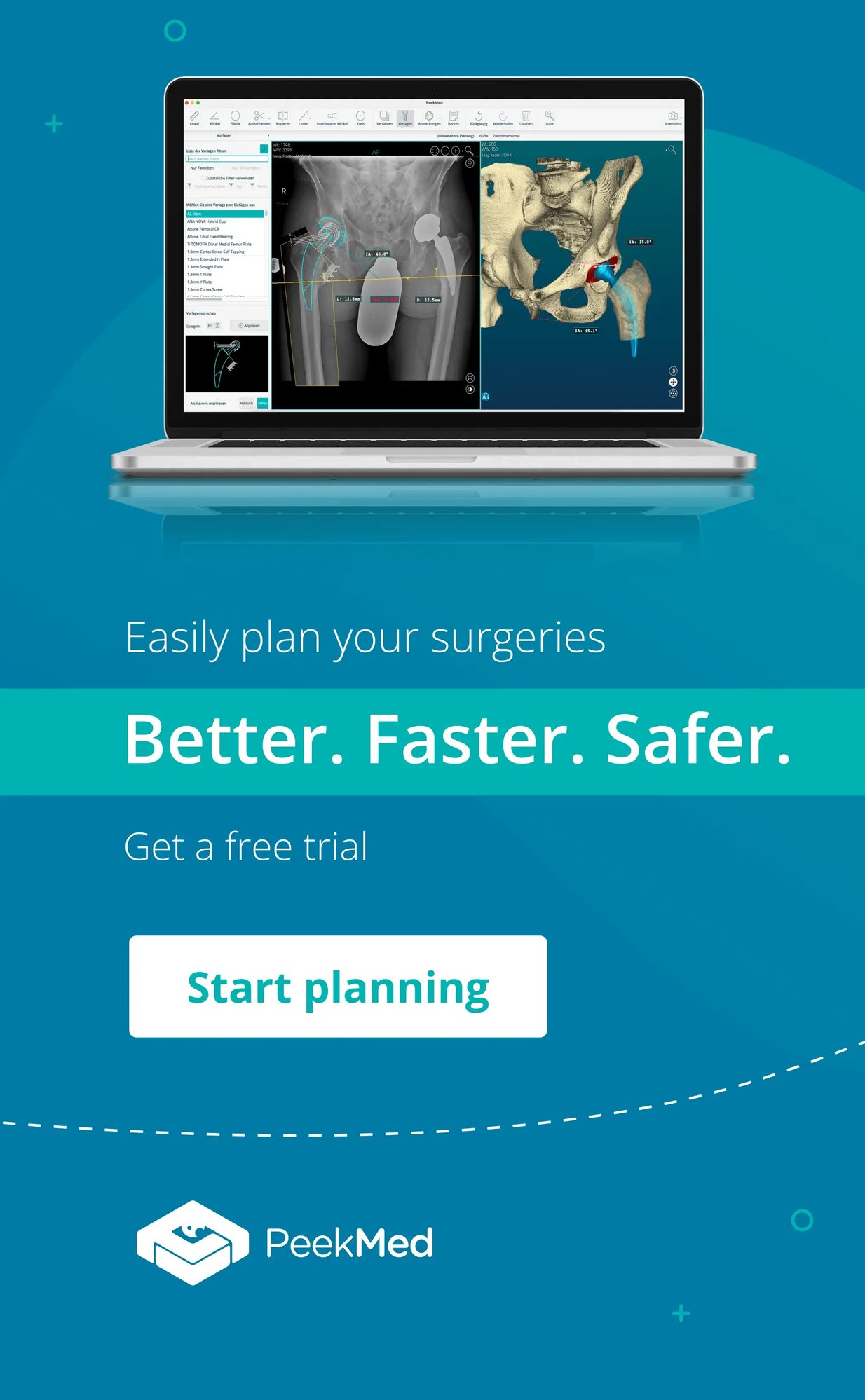PeekMed
Trauma orthopedics focuses on the treatment of injuries to the musculoskeletal system, including fractures, dislocations, and soft tissue injuries. It requires precise diagnosis, effective treatment planning, and thorough patient monitoring, making it an ideal candidate for the incorporation of medical device wearables.
In the ever-evolving world of healthcare, wearable technology has emerged as a game-changer, providing innovative solutions for pre-operative planning and post-operative care. Orthopedic surgeons are no strangers to the transformative impact of technology, and today, we delve into the fascinating realm of smart orthopedics.
Understanding Wearable Technology in Healthcare
Wearable technology, often referred to simply as wearables, comprises a wide array of electronic devices designed to be worn on the body. These devices are equipped with sensors, processors, and wireless communication capabilities, allowing them to collect, process, and transmit data related to the wearer's health and activities.
Wearable technology for healthcare is a broad term encompassing devices designed to be worn by patients, providing real-time data on various health parameters. Orthopedic surgeons are finding wearable patient monitoring devices to be invaluable tools in managing orthopedic trauma cases.
The impact of wearable technology in healthcare cannot be overstated. Here's how these devices are changing the game:
-
Continuous Data Collection
Wearable devices allow orthopedic surgeons to gather continuous data on patients' movements, gait, muscle strength, pain levels, and vital signs. This data provides a comprehensive picture of the patient's condition, enabling more accurate decisions.
-
Remote Monitoring
-
Patient Engagement
Wearable sensors engage patients in their own care. By actively tracking their progress, patients are more likely to adhere to treatment plans and make necessary lifestyle changes, ultimately improving outcomes.
The Benefits of Wearable Technology on Trauma Orthopedics
The integration of wearable technology into trauma orthopedics has far-reaching implications:
-
Streamlined Diagnosis
It assists in the accurate and timely diagnosis of injuries, facilitating prompt treatment.
-
Improved Patient Outcomes
It enables doctors to tailor treatment plans to individual needs, leading to better surgical outcomes and faster recoveries.
-
Efficient Rehabilitation
It supports efficient rehabilitation and wellness programs, ensuring patients regain their mobility and strength.
-
Enhanced Preventive Measures
It contributes to trauma prevention by identifying risks and educating individuals about safer practices.
Applications of Wearable Technology in Orthopedic Trauma
In a world where orthopedic trauma care is undergoing a profound transformation, wearable technology takes center stage, offering a multitude of innovative solutions.
Patients using wearable orthoses, such as exoskeletons and smart braces, equipped with motion sensors, allow surgeons to monitor their mobility remotely and tailor rehabilitation programs for optimal recovery. These ensure that patients perform their exercises correctly, reducing the risk of complications and expediting their recovery. VR headsets can also help by immersing patients in interactive virtual environments, making rehabilitation exercises more engaging and motivating.
Meanwhile, wearable health-monitoring devices, such as fitness trackers and health-monitoring smartwatches, continuously track vital signs like heart rate, oxygen levels, and sleep patterns, providing real-time insights that guide pre-operative planning and post-operative care. Temperature-sensing wearables are valuable for detecting signs of infection or inflammation in orthopedic trauma patients post-surgery.
For pain management, wearable devices, like transcutaneous electrical nerve stimulation (TENS) units, can provide pain relief by delivering electrical impulses to affected areas. They are particularly useful for managing post-traumatic pain and aiding in the recovery process.
For injury prevention, wearable tracking devices, pressure-sensing insoles, and gait-monitoring garments alert individuals to unsafe movements and environments, reducing the risk of traumatic incidents. Some devices even have fall detection and can automatically alert emergency services in case of a fall or severe injury.
Additionally, wearable biomechanical sensors and advanced 3D motion analysis systems assist surgeons in fracture detection. They continuously monitor the affected area, capturing intricate muscle activity and assessing joint kinematics like joint angles and forces, ultimately enabling quicker diagnosis and treatment.
Medical device wearables can also be beneficial in trauma-based care training as they simulate traumatic scenarios, providing healthcare professionals with hands-on training in a safe and controlled environment.
Furthermore, the integration of Big Data in Healthcare enhances the potential of wearables by enabling the analysis of large datasets to identify trends and make data-driven decisions in orthopedic trauma care.
These examples illustrate how wearable technology in healthcare is not just a concept but a tangible reality revolutionizing orthopedic trauma care.
Trauma Orthopedics of Tomorrow
The integration of wearable technology into trauma orthopedics is not just a trend; it's a transformation.
As wearables become more advanced and accessible, doctors should adapt to these tools as essential companions in their daily practice. This adaptability is crucial in unlocking the full potential of wearables, enabling doctors to make data-driven decisions that enhance patient outcomes, streamline procedures, and revolutionize orthopedic trauma care.
It's not just about smart orthopedics; it's about a smarter approach to trauma care that benefits both patients and healthcare professionals alike.
Credits: Prostooleh / Freepik



